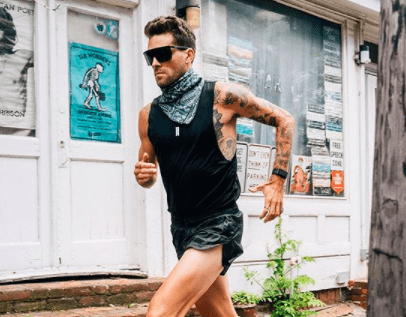REVIEW: the Whoop strap
The ideal recovery tool for the data-loving runner

Whoop is a fitness wearable (not a GPS watch) that’s all about recovery. This product is designed to give runners insights into their everyday habits and promote training gains. This is the training companion that’s much more interested in recovery than mileage, and it’s a really great tool for runners looking to improve.
The strap is sleek and black and sits comfortably on the wearer’s wrist. It doesn’t buzz or beep, and its only light comes from the heart rate monitor that sits underneath the strap. It’s a subtle wearable that’s quietly calculating your every move and helping you become a better runner.

RELATED: What is Whoop?
As runners wear their Whoop for longer, it’ll get to know them and their habits better, which will provide them with more accurate insights into their health. After four days, the Whoop should have an idea of your daily activity levels and assess your strain accordingly. After one month of wear, the strap will recalibrate and provide you with a monthly performance assessment, which will give insights into your training and show where you’re recovering well and where you could improve.
The sleep tracker is the tool I liked the best. I found this tracker to be much more accurate than that of other GPS watches I’ve worn and helped me to improve my sleep habits (a goal I’ve had for years). Sleep is one of the easiest ways to see performance gains, and I was excited to learn that my sleep quality was great, but I could stand to sleep for 30 minutes to an hour longer per night, which I made a priority.
https://www.instagram.com/p/CE4378fJP3T/
The one drawback of the sleep tracker is also its benefit – it lets you know when you’ve had a bad night’s sleep. While you need this feedback to help improve your sleep patterns and habits, in the days leading up to a race, or the night before a hard workout, you don’t need to know that you slept like crap. Runners should wear this strap most of the time, but I’d recommend removing it right before a big event. Sleep is cumulative. after all, so one bad night won’t ruin race day anyway.
The heart rate monitor
I also found the heart rate monitor quite accurate on the Whoop. Whoop uses a PPG-based measurement (which stands for photoplethysmography) over an ECG, which is more accurate. PPG measures arterial volume (the blood flow to and from your arm), whereas ECG is a measurement based on the electrical activity of your heart. Both are commonly used to measure heart rate, but Whoop feels that PPG is more accurate for products worn on the wrist.
Whoop recommends that runners connect their Strava and Whoop apps so the two can work in tandem to assess strain. If you don’t want to connect to your Strava, Whoop will simply use heart rate and ask a few questions to determine exertion. My GPS watch and Whoop strap gave me similar heart rate measurements, suggesting that it’s pretty accurate.
Recovery rings
https://www.instagram.com/p/CDJqEIejQGW/
The recovery rings are a great visual representation of where your body is at in the recovery process. They function like traffic lights: green means you’re in the clear to work out, yellow means you should proceed with caution and consider slowing down that day, and red means that you probably could use a recovery day. Most days the rings corresponded well with how I was feeling in real life – which is good. However, there were a few days when, according to the app, I was recovered, but my body told me otherwise. Remember that your body knows best, so despite the data, I took those days a little easier.
Final thoughts
I wore this strap for one month and learned a lot about my habits, but I also found the data a little addictive and excessive. When I woke up every morning, the first thing I wanted to check was my sleep quality, and through the day I would refresh a few times to check my strain. While this data is very helpful as a check-in from time to time, it can be a little overwhelming when used every day. The amount of data I had about my running and subsequent recovery had a point of diminishing returns for me personally. After a poor night’s sleep, I would show up to a workout already a little defeated, because I knew my body wasn’t 100 per cent.
Going forward, I’ll continue to use Whoop as a training tool, but I won’t wear it every day. Instead, my ideal usage is as a sleep tracker to make sure I’m well rested, and as a strain measurement during a few key weeks of big training mileage (when races are far away). With that said, I’m not much of a numbers person, and can find an onslaught of data a little overwhelming. If you’re someone who loves stats and facts, this is a training tool that will suit you perfectly. If you’re a runner who likes keeping running simple, then hold off on Whoop.


